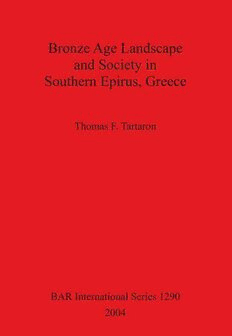
Bronze Age Landscape and Society in Southern Epirus, Greece PDF
249 Pages·2004·25.477 MB·English
Most books are stored in the elastic cloud where traffic is expensive. For this reason, we have a limit on daily download.
Preview Bronze Age Landscape and Society in Southern Epirus, Greece
Description:
In this work the author focuses on the social and other non-material dimensions of life that are increasingly integral to landscape archaeology. Although the geographical focus of the study is southern Epirus, and in particular the lower valley of the Acheron River, the author also attempts a general, though not exhaustive, synthesis of the Bronze Age evidence from all of Greek Epirus. The Epirote Bronze Age remains poorly known and there has been no new synthesis for some time. Until recently, most of the scholarly work has been in Greek, much of it rather inaccessible, and this may have discouraged the wide dissemination of information. More importantly for the present case, however, a fresh assessment of evidence from the whole of Epirus (and to a lesser extent, surrounding regions) was essential to place events and longer-term processes in the lower Acheron valley in proper context. The landscapes of Epirus are highly diverse, and the lower Acheron valley, as lowland, coastal, and Mediterranean in climate, presented a singular set of circumstances to Bronze Age inhabitants. The important contrasts detected across Epirus throw into relief the divergent trajectory of the lower Acheron valley, and suggest certain explanations for it. It is hoped that this work will give the reader a sense of the Bronze Age landscapes of lowland southern Epirus, and a feeling for what it might have been like to inhabit them.
See more
The list of books you might like
Most books are stored in the elastic cloud where traffic is expensive. For this reason, we have a limit on daily download.
